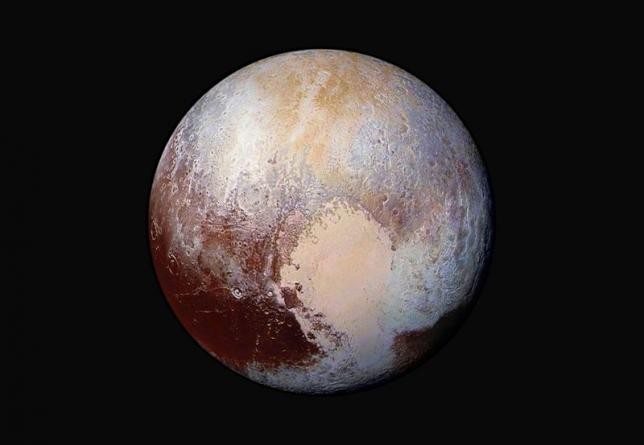NASA's New Horizon's Spacecraft came home with an interesting discovery on the dwarf planet, Pluto.
The New Horizon made a historic flyby in July and the scientists observed that the planet, a resident of the distant Kuiper Belt, has a blue sky and red water ice, according to Phys.org.
"It's gorgeous," New Horizons principal investigator Alan Stern said in NASA's press release. He said they never expected a blue sky in the Kuiper Belt.
NASA released an image captured by the unmanned spacecraft of the blue layer covering the surroundings of Pluto. In NASA's press release, Silvia Protopapa, a science team member from the University of Maryland, College Park, also said, "I'm surprised that this water ice is so red. We don't yet understand the relationship between water ice and the reddish tholin colorants on Pluto's surface."
The Earth also has a blue sky but that is because of the scattering of the sunlight when it hits the earth's atmosphere. According to science team researcher Carly Howett, the blue skies for Pluto "appear to be larger-but still relatively small-soot-like particles we call tholins."
Moreover, the photos captured by the New Horizon's Ralph/Multispecral Vsible Imaging Camera (MVIC) also shot signatures of water ice regions on Pluto. Interestingly, the color image of these water ice regions was red and this could be because of the tholins from Pluto's atmosphere.
Pluto is 33 times farther from the sun compared to Earth. The dwarf planet was discovered Urbain Le Verrier in the 1840s who used Newtonian mechanics to predict its position in the universe.



























